By: J. Ellsworth Summers, Jr. & Scott St. Amand
As stated in Doug Waldorf’s post below, the concept of property valuation in regards to a deficiency judgment is well established within the Eleventh Circuit. The fair market value of the property is established at the foreclosure sale. When foreclosure and bankruptcy cross paths, however, other considerations come into play, and it is important that lenders understand their rights in such situations.
Take for example a scenario in which a lender sells a foreclosed piece of property, and immediately after the property is sold, the debtor files for bankruptcy. A debtor may shortly thereafter file an adversary proceeding under §§ 547 or 548 of the Bankruptcy Code, alleging a fraudulent or preferential transfer, in an attempt to set aside the foreclosure sale.
These two code sections ensure that a creditor receives no more, nor a debtor any less than it deserves as a result of such transfers. Under § 548, a constructive fraudulent transfer occurs when the debtor receives less than a reasonably equivalent value in exchange for such transfer. In 1994 the Supreme Court clarified that the “fair and proper price for foreclosed property, is the price in fact received at the foreclosure sale, so long as all the requirements of the State’s foreclosure law have been complied with.” Thus, in an otherwise valid foreclosure sale, the price received by the creditor will always have “equivalent value” under § 548.
Until very recently, courts have treated transfers under § 547 similarly, although the preferential transfer valuation test is different than the fraudulent transfer “equivalent value” test in § 548. Specifically, § 547(b)(5) allows a transfer to be voided as preferential if it enables a creditor to receive more than it would have under a “hypothetical” Chapter 7 liquidation.
